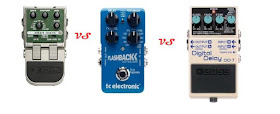Hello and welcome to this week's article!
Today we're going to review the latest Impulse response pack from Jst: Conquer All vol.4!
Joey Sturgis is a popular producer from United States, the man behind the iconic sound of The Devil Wears Prada, Born of Osiris, Asking Alexandria and many other bands, and this is yet another very usable ir pack for various genres, but particularly suited for rock and metal.
This pack features 3 folders: Eq IRs (the impulse responses already Equalized by Joey, to start playing immediately with a polished sound), RAW (the same impulses but not equalized, to leave us total tone shaping freedom) and Kemper, which are the impulses in the Kemper format.
The speakers included in this pack are 3 Marshall (a 4x12 and 2 2x12 each with different speakers) and one Orange 2x12 with V30 speakers.
Each of these cabinets has different combinations of microphones (both on and off axis) and preamps, and it is very interesting to try to combine two impulses or more, since they are all perfectly in phase.
I must say that these impulses live up to the Jst name: they are solid products, very usable also in a professional studio environment and at the right price.
I consider the equalized version a bonus, since it lets us use a bit of Joey Sturgis tone with any guitar amp, both virtual or real.
The sample you can hear on the top of this article was created by combining 2 impulses: an sm57 straight and a Sennheiser md421 blended together, with no post eq added; I have chosen the ones passing through a Neve preamp because they have a bit more rolloff on the high end, making them more realistic and less scratchy. It is literally the guitar (a self built Harley Benton Sg Kit) and the virtual amplifier (Tse X50II).
There are 4 unique setups with 24 IRs for each setup
- Marshall 2x12 oversized 212 cab with Celestion Vintage 30s
- Marshall Mode 4 412 cab with Celestion K100s
- Marshall Vintage Modern 212 combo with Celestion Greenbacks
- Orange 212 Open Back Cab with Celestion Vintage 30s
Preamps Used
Preamps Used
- Don Classics Neve 1073 clone
- API A2D
Microphones Used
Microphones Used
- Shure SM57
- Sennheiser MD421
- Beyerdynamic M201
- Sennheiser E906
- Shure SM7B
- Neumann TLM103
Become fan of this blog on Facebook! Share it and contact us to collaborate!!
Become fan of this blog on Facebook! Share it and contact us to collaborate!!




